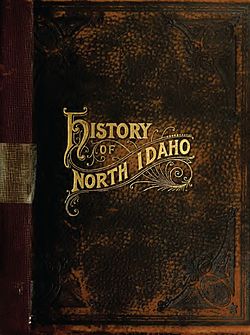
The following works deal with the cultural, political, economic, military, biographical and geologic history of pre-territorial Idaho, Idaho Territory and the State of Idaho.
Contents
- Surveys of Idaho history
- Historic expeditions
- Hayden Geological Survey (1871)
- Lewis and Clark Expedition (1804–1806)
- Business and labor
- Indians
- Military histories
- Primary sources
- Local and regional histories
- Law and order
- Ghost towns
- Biographies
- Memoirs and primary sources
- Political histories
- Social history
- Geology
- See also
- Notes
- Bibliographies